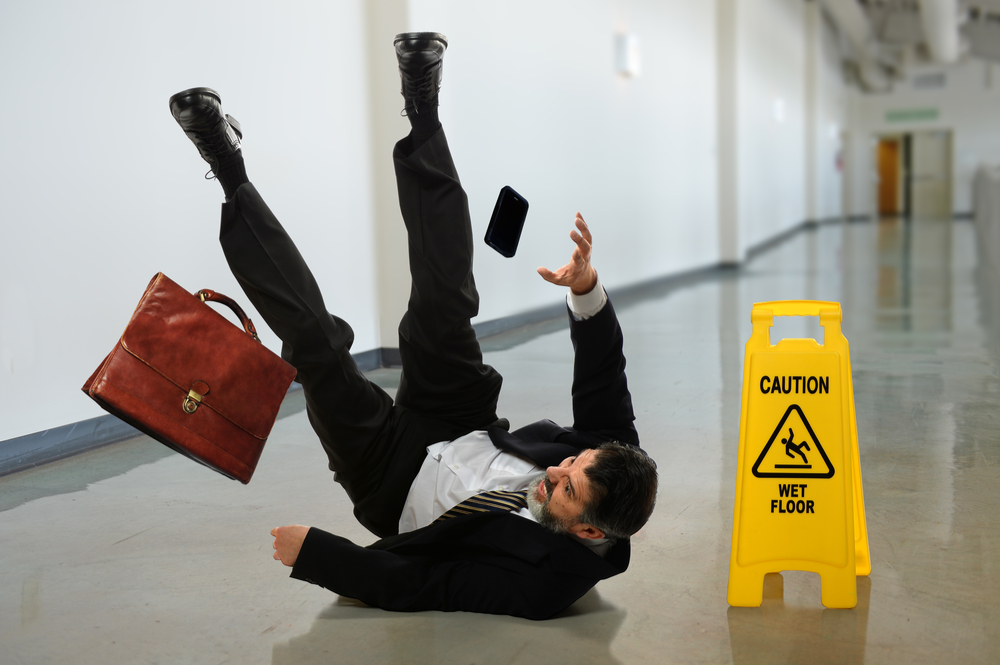On June 27th, 2019 an Ohio jury awarded a woman $3 million for injuries she sustained when she tripped and fell on a casino floor. There’s nothing especially startling about that, as far as it goes. Nonetheless, the story made national news. There’s a twist, of course. The woman had tripped over a WET FLOOR sign that had collapsed. A measure put in place to warn of a hazard became, itself, a hazard. The news media found it ironic. Entertainment. An amusing twist in the personal injury litigation sphere.
Some may find this amusing. The plaintiff did not. Rather, her personal injury lawyers argued she’d “…suffered temporary and permanent bodily injuries”. They cited medical expenses, pain, suffering, and loss of enjoyment in the present and in the future. Media reported the fall had broken a kneecap.
CONSTRUCTIVE KNOWLEDGE
The crux of the injured woman’s lawsuit was the defendant’s (i.e., the casino’s) constructive knowledge of the hazard posed by the collapsed WET FLOOR sign. An A-frame warning sign of this type is familiar to most adults nowadays. And they are, after all, warning signs. They’re brightly colored. They are above all designed to be seen. The sign in the casino, however, had been knocked over by customers. It lay flat on the floor. The plaintiff argued that casino management should have become aware of this hazard and corrected it before she’d tripped over it.
The phrase “should have become aware” represents the legal concept of constructive knowledge. The casino, said the plaintiff’s lawyers, was negligent by not having reasonable safety procedures in place. Casino management, they argued, should have as a matter of routine quickly identified and fixed the collapsed sign.
DEFENSE IN PERSONAL INJURY LITIGATION
The defense, conversely, argued that the collapsed sign did not present a hazard to any person with normal awareness of his or her surroundings. It was plainly visible, they asserted. The plaintiff, therefore, had “… superior or equal knowledge of the alleged hazard”. In other words, it was as plain as the nose on her face. And so she was at fault for the fall and her injuries.
A casino is perhaps the best-documented space in the modern world. There are a lot of surveillance cameras. They cover nearly every square inch of the premises. There would be little or no doubt about the sequence of events preceding, during, and after the accident. The jury’s verdict reflected their interpretation of these events. The jurors concluded that the plaintiff had been normally attentive to her surroundings. The casino, they ruled, had been negligent by letting a hazard remain longer than is reasonable.
The casino’s insurance carrier has not commented on the possibility of appealing this verdict. What is certain is that the plaintiff’s personal injury attorneys did an outstanding job for their client. Under Ohio law, either party can require a jury trial. In this case, it was doubtless the plaintiff that requested one. So far, it was the correct strategic choice. This is the kind of approach that the Silver Injury Law, PA, Boca Raton personal injury lawyers’ record is replete with.




